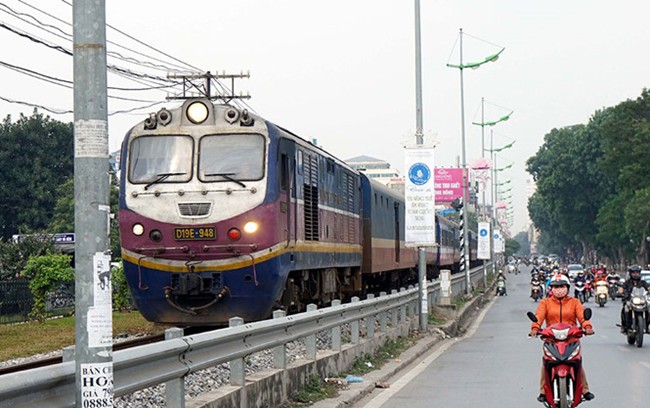|
Railway
investment lags far behind road expenditures
The modest
investment in railways in the last 100 years, as well as high management
costs and ticket prices have pushed the railway sector into an impasse.

In
2014, when the Noi Bai – Lao Cai highway was opened, the Hanoi – Lao Cai
railway, which was once of the most crowded rail routes, lost 10-15 percent
of passengers within one month.
The rail route still cannot attract passengers, even though Hanoi Railway Transport JSC lowered the ticket price to VND399,000. Passengers now tend to turn their back to railway transport, mostly because they only have to spend three hours to travel between Hanoi and Lao Cai by coach, while it takes 6-7.5 hours to travel by rail. Doan Duy Hoach, deputy general director of the Vietnam Railway Corporation, said infrastructure has become too old as rail structure was set up 100 years ago, while the corporation doesn’t have money to upgrade the railways as the state investment is modest. While the state has been allocating big capital to road development, it seems to have forgotten about the railway. A report shows that in 2001-2010, the total investment capital for transport infrastructure projects was VND160.08 trillion, of which 88 percent was allocated to road projects, while only 3 percent went to railways.
In
2011-2015, when the investment capital for transport infrastructure increased
sharply to VND330 trillion, 90 percent of capital went to roads (VND299
trillion) and only 3 percent was reserved for railways (VND9.2 trillion).
As a result, railways had 1.14 percent of passenger transport and 2 percent cargo transport. Meanwhile, the figures were 95 percent and 65 percent for roads. The capital allocated by the state budget is just big enough to satisfy 60 percent of the demand for maintaining the existing railways. The project on upgrading and modernizing the Thong Nhat Route from Hanoi to HCMC has been approved, but the disbursement has not been made. Pham Sanh, a renowned transport expert, commented that because of the delays in developing railways, Vietnam may lose important opportunities to develop a transport network in a comprehensive way, thus leading to higher logistics costs and lower economic competitiveness. While the state capital for railway development is modest, it is difficult to call for capital from private investors. Hoach said it is easy to persuade investors to inject money into road projects because they can take back investment capital by collecting tolls. But they cannot do this with railway projects.
Thanh
Lich,
VNN
|
Thứ Sáu, 30 tháng 12, 2016
Đăng ký:
Đăng Nhận xét (Atom)
Không có nhận xét nào:
Đăng nhận xét